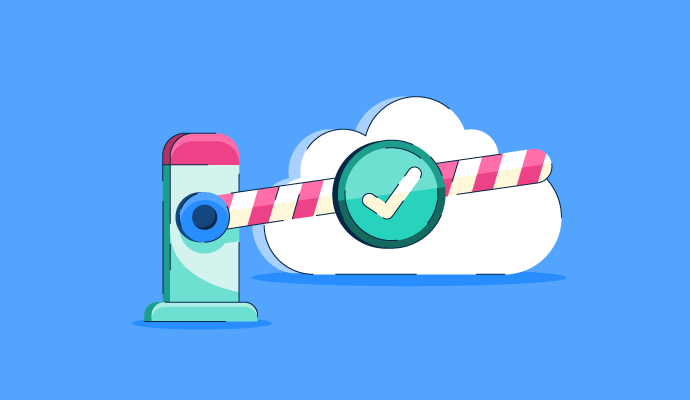February 28, 2025
.png?width=400&height=150&name=Copy%20of%20G2%20Image%20(1).png) by Shreya Mattoo / February 28, 2025
by Shreya Mattoo / February 28, 2025

Are you over the moon when your Uber ride arrives on time? Me too. In my last 28 years, I have never had a compromised experience with my preferred cab rental services. But the caravan doesn't just stop at timely pickups.
Any business, particularly in the logistics or transportation industry, needs dedicated fleet management software to oversee vehicle operations worldwide.
Their backend teams utilize fleet management software to route expert drivers, run vehicle service operations, navigate safe routes, and ensure timely dispatches or deliveries.
Intrigued by the effort and grit of backend fleet managers, I decided to explore the 6 best fleet management software and features like GPS tracking, driver assignment, distance calculation, and more to assist these businesses in optimizing their transportation and delivery processes.
According to G2 Grid Reports, these fleet management software programs are top-rated in their category. I’ve also included their monthly pricing to make comparisons easier for you.
As intrigued as I was to learn about how companies manage their logistics and transportation workflows, I was dazed to see that fleet management software provides granular vehicle controls, navigational maps, and service contracts for the fleet of cars, bikes, or other modes of transportation to keep the inner machinery working and give it a facelift to promote branding.
Not only that, but I had an aerial and satellite view of vehicles moving in certain demographics, continuous driver updates, and liaison with fuel stations to keep the vehicle in motion without any obstruction or stoppage.
Having a time frame for evaluation also empowered me to check additional ways of ensuring vehicle optimization, such as appointing a zonal supervisor and warehousing facilities in zones. Having real-time updates of vehicle condition, driving style, and mileage are all crucial lynchpins to ensure that your fleet is traversing smoothly across your destinations and drivers are taking good care of the loaded goods and car machinery.
I spent weeks evaluating various fleet management tools and evaluated them based on key features like fuel maintenance, GPS tracking, repair scheduling, driver behavior monitoring, and service reporting to shortlist the below-mentioned tools for your informed decision-making.
During my analysis, I also factored in the key features, pros and cons, pricing, and real-time user reviews from G2 to shortlist common patterns and evaluate real-world data to refine my search parameters.
I consulted a professional with hands-on experience and validated their insights using verified G2 reviews. The screenshots featured in this article may mix those captured during evaluations and those obtained from the vendor's website.
I also remained compliant with the goals and objectives that you seek from fleet management software, such as increased return on investment, fuel efficiency, vehicle tracking, cost analysis, and driver safety to reduce anxiety and include contextual and highly prominent solutions, as per G2's recent grid report.
Apart from me, these tools have been rated as market leaders in the fleet management category on G2 and assigned a proprietary G2 score based on consumer satisfaction, market presence, and other influential factors.
Other than maintaining vehicle operations and ensuring fuel efficiency, a fleet management tool also needs to provide services like accident prevention, warehouse management, and passenger safety to channel beyond the conventions of traditional fleet management and improve the perception of the brand.
In my view, I chronicled some must-have features that you should definitely tick off as you hit the market with your research process:
My evaluation isn't just limited to one mode of transportation or dispatching process. It is a combination of listing various features for other industries that want to optimize and supervise their fleets more effectively.
Out of the 40 fleet management tools I initially acknowledged, I shortlisted 6 that are perfect solutions to manage, automate, and digitize fleet management.
This list below contains genuine reviews from the game engine category page. To be included in this category, software must:
*This data was pulled from G2 in 2025. Some reviews may have been edited for clarity.
Samsara stands out as a comprehensive fleet management solution that supports key functions like vehicle tracking, preventive maintenance, and fuel monitoring. Users often highlight its effectiveness in streamlining logistical operations and overseeing order shipments.
I’ve noticed that many users praise the intuitive user interface. The platform is considered highly user-friendly, making it easy to track vehicles in real-time or pull detailed reports, usually just a few clicks away.
Users also seem to appreciate the seamless GPS tracking and navigation workflows. Feedback points to fast, accurate tracking that helps fleet managers monitor vehicle locations with precision.
From the reviews I’ve read, the GPS capabilities also contribute to route compliance and fuel efficiency. Users mention that it helps ensure drivers stay on course and reduces unnecessary mileage, ultimately helping to cut fuel costs.
Safety is another recurring theme in user feedback. The dash camera feature is frequently cited as a standout, offering high-quality video footage that can be retrieved when needed, for incident verification or driver training purposes.
In addition, users value the system’s ability to detect risky driving behaviors, like harsh braking or distracted driving. This data supports better coaching and contributes to overall fleet safety.
Another point that’s come up is Samsara’s strong integration capabilities. From payroll and compliance to maintenance systems, users find that these integrations save time and simplify operations.

That said, there are some downsides. I’ve come across reports of delays in accessing video footage, which can be an issue in time-sensitive situations. A few users also noted occasional connectivity issues.
Price is another consideration. Samsara isn’t the most budget-friendly option, and some reviewers suggest it may not be ideal for smaller fleets or teams with tighter financial constraints.
Overall, Samsara appears to be a robust and scalable platform for fleet and mileage management, offering a range of smart tools to help optimize logistics and boost operational efficiency.
"All around usefulness from tracking trucks and trailers, to accessing statistics such as fuel and fault codes, to setting geo-fences around hot spots. This barely scratches the surface as there are numerous features that aid in countless ways, such as ELD integration that accurately shows when a driver is in Sleeper Berth, Off-Duty, or On-Duty, etc. We use this software 24/7 and have had zero issues with ease of use and integration - both were handled effortlessly."
- Samsara Review, Cory G.
"If I could change one thing about Samsara that I am not comfortable with, it would have to be knowing the exact location of the leak when something leaks in the internal parts of the trucks. I would like a more in-depth view of the issues. Also, when going back in days, the mileage stays the current day. This is something that would be helpful to DOT companies that need help with IFTA mileage gains."
- Samsara Review, Arjun P.
Learn how to control fuel inconsistencies and build good mileage with free mileage tracker apps to optimize budget operations.
Motive is a comprehensive fleet management platform that allows users to monitor vehicles, assets, equipment, and other order carriers all from a centralized system. G2 reviewers often highlight its ability to support operational growth at scale.
I’ve noticed that installation is frequently described as quick and hassle-free. Users say you don’t need an advanced technical background to get started, and many could configure the system smoothly without external support.
Another aspect users consistently praise is the intuitive and responsive user interface. Many mention being able to view fault codes, monitor fleet health, and track driver behavior in one convenient dashboard.
The integration with Fleetio is also a major advantage, especially for users who already rely on it for maintenance tracking. This integration helps create a more unified view of fleet operations, which users find very efficient.
Users seem to appreciate Motive’s strong compliance tracking tools. The ability to access driver logs under the compliance tab is often highlighted for offering much-needed transparency into driver performance and helping ensure regulatory alignment.
Reviews suggest that Motive does a solid job of driver safety and coaching. Users mention that real-time alerts and behavioral feedback have contributed to better driving habits across fleets.

That said, there are some areas where users think Motive could improve. One recurring theme is the need for better filtering options in the fleet view. Several G2 reviewers mention difficulties with grouping vehicles and customizing views for easier monitoring.
I’ve also come across mentions of occasional ELD connectivity issues, particularly when mobile devices lose signal. While real-time tracking is generally reliable, a few users have reported minor lags.
Another point users bring up is the size of the telematics hardware. Some find the device too bulky, especially when installing it in smaller vehicles where under-dash space is limited.
Lastly, log freezing issues have been reported in a few cases, where the system incorrectly logs continuous driving. While not widespread, users mention that repeatedly correcting this can be time-consuming.
Overall, Motive seems to be a fast, reliable, and adaptive fleet management solution that helps coordinate movements efficiently while supporting driver safety and compliance.
"They have plenty of people prepared to help. They listen to issues, big and small, and do everything possible to follow through and make sure they're taken care of. They try to have the best possible software related to the trucking world with all of the different features available, meeting rules and regulations. The system makes it much harder for drivers to fall through the cracks and get lazy on their logs."
Motive Review, Logan H.
"We seem to change reps way too often. It would be nice to build a relationship with one person. It makes you a bit shy to do so when you know it is only a matter of time before that person is gone and you are on to the next rep. The AI Dashcam has a video quality issue. The tape that is used on the bracket is so strong it does not come off when replacing a windshield or when a driver leaves. We have been waiting for over a month for replacement brackets and have not seen anything yet. I have emailed several times and have not seen anything other than "they were sent."
- Motive Review, Ronald J.
Lytx offers customizable services for businesses and partners, covering areas like risk detection, driver behavior tracking, vehicle performance, and fuel management. Users frequently mention its use of AI/ML-based risk detection as a helpful feature for proactively reducing potential hazards.
One of the most frequently praised aspects in G2 reviews is driver behavior analysis. Lytx goes beyond basic location tracking and provides detailed insight into how vehicles are being driven, monitoring speed, odometer readings, fuel use, and more.
Users seem to appreciate how automated alerts and reporting streamline operations. Instead of manually digging through data, users receive timely insights that have helped improve fleet safety records in real-world applications.
Based on user feedback, the Lytx Driver App and coaching tools are another standout. These features make it easier to provide constructive feedback without overwhelming the driver, and several reviewers note that they’ve helped reinforce safer driving habits.

However, I’ve noticed some G2 users raise concerns about camera accuracy, mentioning that the system occasionally misidentifies objects or signs. While not a major drawback, it's something to be aware of.
From what I’ve gathered, driver acceptance can also be a challenge, especially during the initial implementation. Some drivers were uncomfortable with being monitored, though many came around once they saw the benefits in action.
Installation issues also arise in reviews, particularly when the windshield needs replacing, which can complicate the camera's reinstallation. While general customer support is well-rated, escalating issues to Tier 3 support is said to take longer than expected.
Overall, Lytx is a valuable platform for enhancing route visibility, supporting safe driving practices, and creating transparency across driver operations.
"I appreciate how the software provides a framework for fundamentally improving driver safety and changing the safety culture of a company. It can be customized to support different divisions/areas in focusing on their needs/areas for improvement. The user interface is clean and easy to navigate. Numerous metrics are provided, and it is easy to analyze the data."
Lytx Review, Joseph V.
"The only issue we've had consistently is the cameras speaking "lens obstruction" throughout the entire day. It seems to have been fixed; they are sensitive to dirt even on the windshield, rain, and sun strips at the top of the windshield."
- Lytx Review, Sarah S.
Azuga Fleet is a comprehensive vehicle tracking and management solution that gives businesses more control over vehicle maintenance, driver oversight, and safe dispatching. It’s built to support end-to-end fleet operations efficiently.
I’ve noticed that real-time location tracking is a standout for users. Many highlight how it saves time previously spent coordinating with drivers. The fleet dashboard is another plus, it offers clear visibility into trip history, fuel consumption, and safety metrics.
Accuracy also seems to be a differentiator for Azuga. Compared to other tools, G2 reviewers consistently mention how precisely it tracks vehicle and equipment locations, which is crucial for operational transparency.
Users also value the Azuga Fleet app, which helps them monitor driver routes and behavior on the go. Real-time alerts for speeding, harsh braking, or aggressive acceleration are seen as effective tools for preventing accidents and reinforcing safe driving habits.

That said, the user interface could be smoother. I’ve noted feedback about occasional lags that affect navigation. While the reporting feature is helpful, it can be a bit cumbersome, G2 users say they often need to dig through too much data to find relevant insights.
Customer support feedback is mixed. While many users don’t frequently require assistance, those who do mention that response times can be inconsistent. GPS tracking is generally praised, though some think update speeds could be improved.
Despite these limitations, Azuga Fleet stands out as a dependable platform for vehicle oversight, offering a strong balance of security, tracking accuracy, and route optimization tools for businesses that manage transportation at scale.
"I can locate where my drivers are at all times. I needed to "find" them during the day to see which driver was closest to a client who needed immediate service, and I didn't have to make numerous phone calls to find out where everyone was. This has saved me a lot of valuable time and money."
- Azuga Fleet Review, Rhonda S.
"The only issue that we have experienced with Azuga is that there is a small learning curve on the admin side. Knowing how to set up admins who are also drivers seemed more counter-intuitive than it maybe should have been. That said, it was a small hurdle and doesn't detract from the value we have received."
- Azuga Fleet Review, Timothy S.
Geotab is a robust vehicle and telematics platform tailored for businesses of all sizes to manage their fleet operations with greater safety and precision. In addition to core tracking, it provides SaaS-based fleet management tools that support broader strategies like global procurement and operational compliance.
Users seem to appreciate real-time tracking. G2 reviewers consistently mention the ability to access historical driver behavior quickly, which helps plan and forecast fleet performance over time.
I’ve noticed that the interface is user-friendly, even for drivers who aren’t particularly tech-savvy. Several users pointed out how fast their teams adapted. The platform also shines in compliance management, especially with hours of service (HOS) tracking across multiple locations.
Users highlight that automated ELD compliance is a major benefit. It eliminates manual tracking burdens and keeps logs accurate. Combined with built-in monitoring tools, it supports route optimization, improves dispatch planning, and enhances vehicle safety.

That said, the reporting system could be more intuitive. I’ve come across several G2 reviews noting that setting up and customizing reports can be more time-consuming than expected, which slows down insights and decision-making.
Customer support experiences are somewhat inconsistent. While some users report fast responses, others mention troubleshooting issues independently when support lags.
I’ve also seen comments about occasional GPS inaccuracies during network outages or server lags. Alarm notifications, while helpful, can become overwhelming if not cleared promptly or if they persist longer than necessary.
Overall, Geotab appears to be a comprehensive solution for fleet visibility and predictive maintenance, offering strong tools for compliance, driver behavior tracking, and fuel efficiency optimization, even if a few areas, like reporting and support, could be improved.
"The "beeping" warning when drivers are speeding or in a harsh driving event is very useful for training drivers to stay safe. It scared the drivers, but they kept their speed down. The tracking worked fairly well."
- Geotab Review, Joe G.
"The map and the GPS provided with this software is a little bit cumbersome and even clumsy sometimes. The GPS does not work properly when there is an issue in the server, or the network speed is poor."
- Geotab Review, Gautam P.
ClearPathGPS offers an intuitive and user-friendly interface, which users frequently highlight as a key benefit. Many mention that navigating the platform doesn’t require a steep learning curve, tasks like checking real-time vehicle locations, accessing reports, or tracking fleet activity can be done seamlessly and without much manual effort.
Users seem to especially appreciate the real-time tracking feature. I’ve noticed consistent mentions of strong GPS accuracy, which allows fleet managers to monitor vehicle locations at any given moment, an essential component for running time-sensitive operations.
Another area where ClearPathGPS seems to deliver value is in operational efficiency and reporting. According to reviews, users can generate detailed travel reports that break down vehicle activity, idle time, and route efficiency, helping them dig deeper into performance metrics and uncover areas for improvement.
I’ve noticed several mentions of responsive and supportive customer service. Users often say the team is quick to respond and genuinely invested in ensuring smooth fleet operations, which adds a layer of reliability to the platform.

From what I’ve seen in user reviews, the plug-in GPS devices occasionally present reliability issues. A few users have mentioned slight lags in tracking updates, though these incidents appear to be infrequent. Still, they seem worth noting for teams that depend on real-time precision.
When reviewing feedback on customization, I’ve noticed that the reporting system draws mixed reactions. Users generally find it robust, but some have expressed a desire for more flexibility, particularly the ability to create tailored reports or access analytics that better reflect their specific business needs.
Another point that comes up is pricing for premium plans. Users seem to feel that the current pricing model doesn’t always scale well with different fleet sizes or operational requirements, which can be a concern for growing businesses.
That said, users consistently highlight vehicle tracking clarity as a core strength of ClearPathGPS. From what I’ve gathered, the platform enables timely decision-making by offering clear visibility into vehicle location and route status, helping teams maintain better control over their on-road operations.
"ClearPath GPS has an amazing customer service and sales team. I can get answers within the hour, usually within minutes of an issue that I'm having. They quickly ship new dash cam and trackers when I need them! Their portal is easy to use, and the implementation was flawless! We use these daily."
- ClearPathGPS Review, Meghan G.
"The only slight issue that we had was trying to find an existing tracker, and there weren't any records of where it was installed."
- ClearPathGPS Review, Carol S.

The best fleet management software for small businesses includes Samsara, Verizon Connect, Reveal, and Fleet Complete. These software programs offer cost-effective GPS tracking, driver behavior tracking, and hours-driven logging to supervise your fleet at any time of the day.
Fleet management software costs can vary based on features, business size, fleet size, and provider. The ideal cost range for basic plans is $10 to $50 per month, while advanced plans, including AI-driven analytics reports, telematics, or compliance, may range from $50 to $250 per month.
The best fleet management software for trucking includes Motive, Samsara, and Geotab, which offer advanced GPS tracking, ELD compliance, fuel monitoring, and AI-powered safety tools for faster emergency management and incident prevention and recovery of your vehicles in far-flung areas.
The best fleet management software includes FleetStack, Odoo Fleet, and OpenGTS. These software programs offer features like basic GPS tracking, maintenance scheduling, and fuel management to control your operations free of cost.
The fleet management system supports multi-location operations by allowing fleet managers to configure region-specific compliance rules, like hours of service (HoS) regulations, emissions, standards, and tax reporting. It also maintains toll tax data, local traffic laws, and a digital repository of vehicle registration documentation to enable the smooth movement of your vehicle.
This system collects data on engine diagnostics, fuel consumption, tire pressure, battery health, and driving behaviors such as acceleration and braking patterns. It also refers to trip meter readings, engine oil or brake oil checks, gear workability, and other internal details to inform you about the vehicle's condition.
Yes, most fleet management software integrates with existing ERP systems like SAP, Oracle, and Microsoft Dynamics through APIs or built-in connectors for an uninterrupted and direct flow of data exchange.
From my analysis, it was evident that you must take care of your fleet's fragility and sensitivity to manage it more efficiently and with discipline. By dispatching or dropshipping with your company fleet, you leave an indelible mark on customers and employees and position yourself as a brand that creates seamless global networks and provides quality transportation and logistics.
Factoring in all these concerns when shortlisting and buying software is critical to maintaining a convenient and quality logistic and supply chain process in the future.
Build calculated invoices and analyze road costs with the best expense management software in 2025 to stay within the limits of organizational budgets and back your financial planning.
Shreya Mattoo is a former Content Marketing Specialist at G2. She completed her Bachelor's in Computer Applications and is now pursuing Master's in Strategy and Leadership from Deakin University. She also holds an Advance Diploma in Business Analytics from NSDC. Her expertise lies in developing content around Augmented Reality, Virtual Reality, Artificial intelligence, Machine Learning, Peer Review Code, and Development Software. She wants to spread awareness for self-assist technologies in the tech community. When not working, she is either jamming out to rock music, reading crime fiction, or channeling her inner chef in the kitchen.
Compensation planning sounds straightforward until you're knee-deep in spreadsheets, juggling...
 by Soundarya Jayaraman
by Soundarya Jayaraman
Are you an HR generalist struggling to manage your rapidly growing team and drowning in...
 by Dibyani Das
by Dibyani Das
In today's crowded market, countless products launch daily, but only a few succeed while the...
.png) by Devyani Mehta
by Devyani Mehta
Compensation planning sounds straightforward until you're knee-deep in spreadsheets, juggling...
 by Soundarya Jayaraman
by Soundarya Jayaraman
Are you an HR generalist struggling to manage your rapidly growing team and drowning in...
 by Dibyani Das
by Dibyani Das


